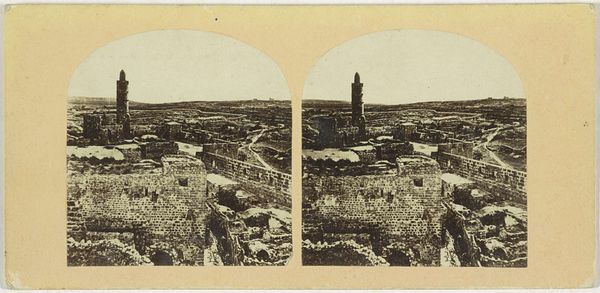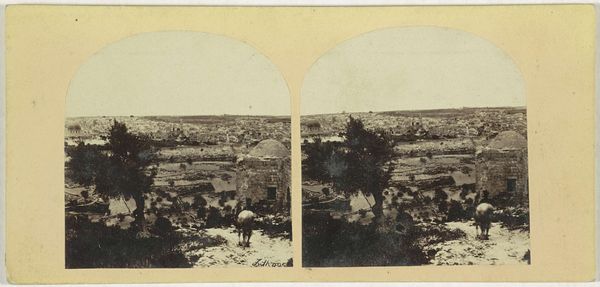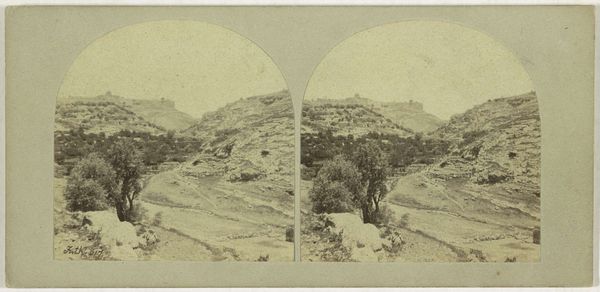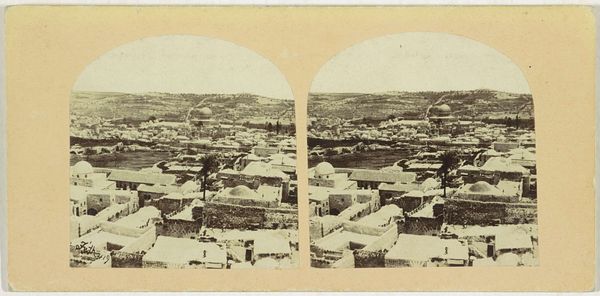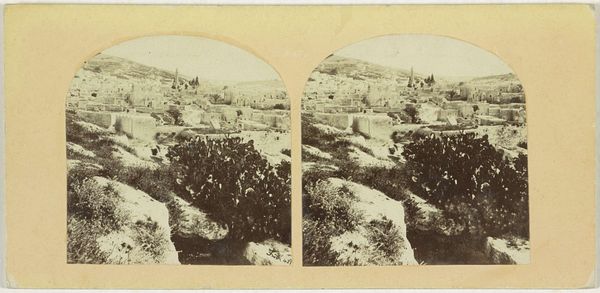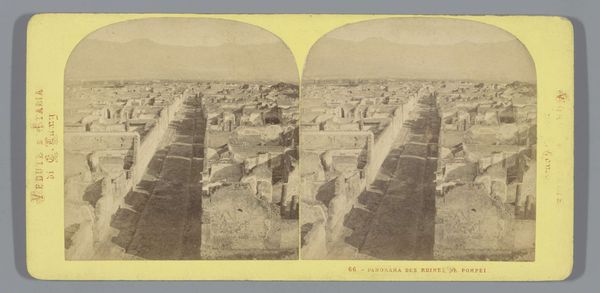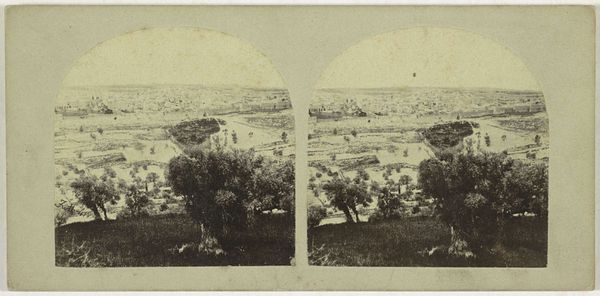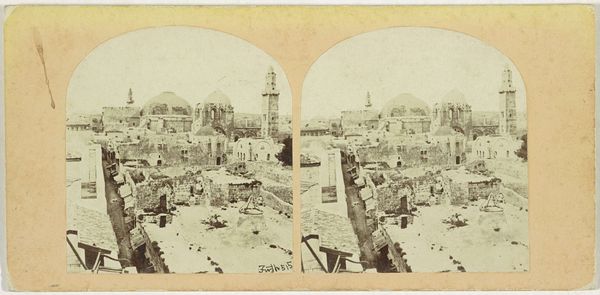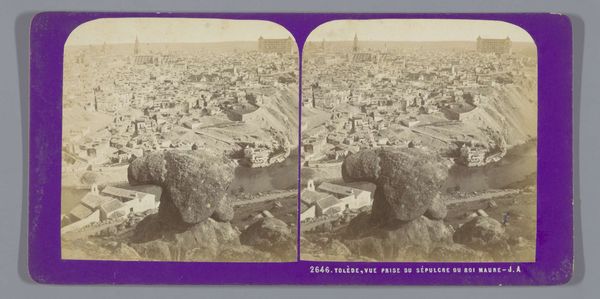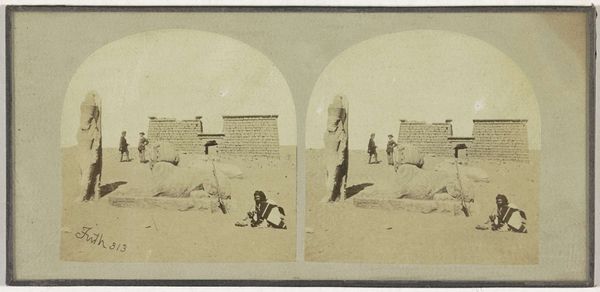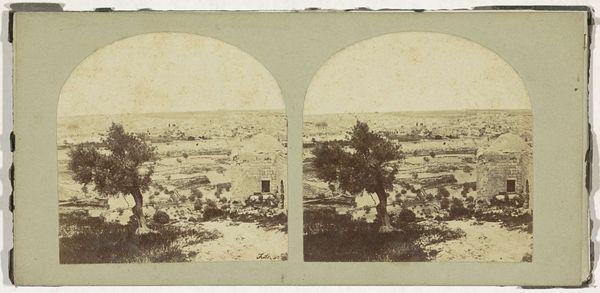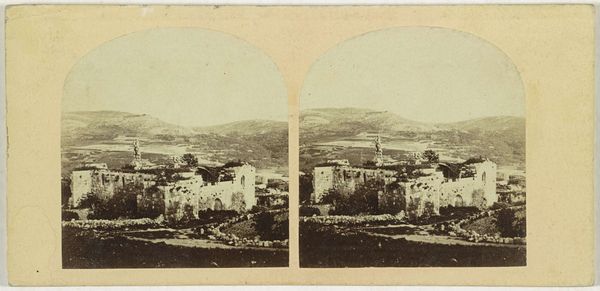
Gezicht op Jeruzalem met de Sint-Annakerk op de voorgrond 1859 - 1861
0:00
0:00
print, photography, gelatin-silver-print
#
16_19th-century
# print
#
landscape
#
photography
#
coloured pencil
#
orientalism
#
gelatin-silver-print
#
cityscape
Dimensions: height 84 mm, width 174 mm
Copyright: Rijks Museum: Open Domain
Editor: So this is Francis Frith’s "View of Jerusalem with the Church of St. Anne in the Foreground," taken between 1859 and 1861. It's a gelatin-silver print, and the city feels incredibly…dense, almost overwhelmingly built up from stone. What strikes you most about this image? Curator: I'm immediately drawn to the materiality of the photograph itself, and how that interacts with the subject matter. This gelatin-silver print wasn't just capturing Jerusalem, it was *producing* a certain vision of it for a European audience. Think about the process – the labour of the photographer in the field, the chemical processes involved in creating the image, and then the distribution and consumption of the print. Editor: Consumption, like it was another orientalist souvenir? Curator: Precisely! The very act of turning Jerusalem into a commodity through photography. The way the photograph flattens and simplifies the architecture makes the city seem uniform. It reinforces pre-existing notions of the 'Orient' as monolithic and unchanging. We see the means of representation being as potent as any other material used to define cultures. Look closely – can you see any specific signs of labour in this photograph? Any hint of the hands that built the city or took the picture? Editor: It's so crisp for an outdoor photograph from that time. But I see what you mean – it's been processed to feel...decontextualized, more like a packaged scene than an inhabited space. It seems posed more than authentic. Curator: Exactly. It's easy to look at this and think we're seeing "Jerusalem," but we're really seeing a carefully constructed *image* of Jerusalem, filtered through Victorian-era expectations and desires. This helps reinforce and disseminate this era's colonialist and class structures. Editor: So it’s less about the place and more about how it's being manufactured and marketed. Fascinating – it changes my perception completely. Curator: That is materiality: questioning the story that the art appears to be telling on the surface. Always ask whose story the piece appears to champion.
Comments
No comments
Be the first to comment and join the conversation on the ultimate creative platform.
